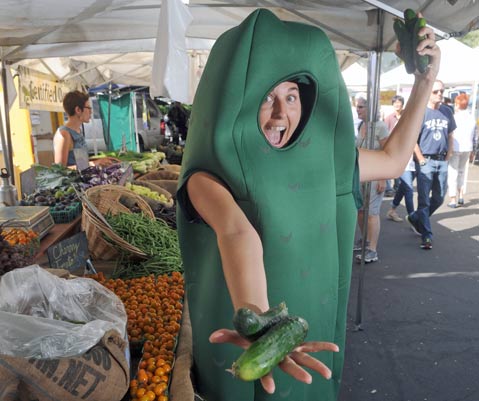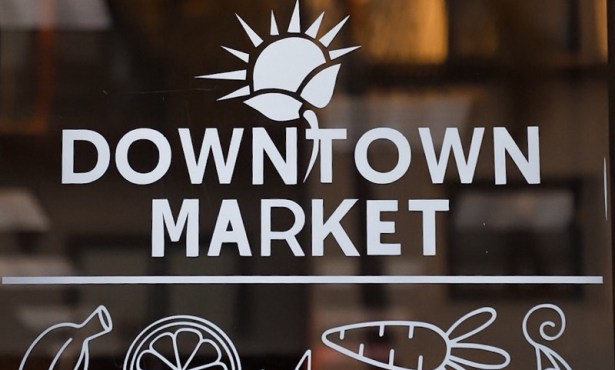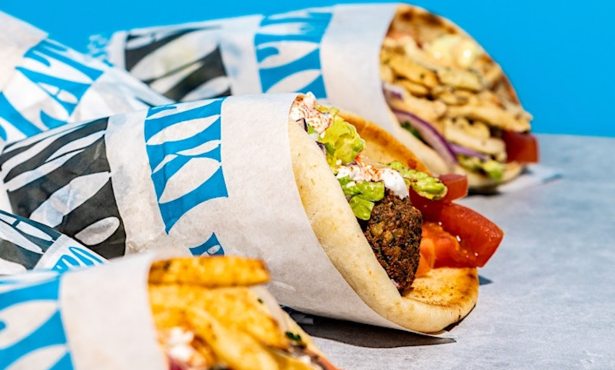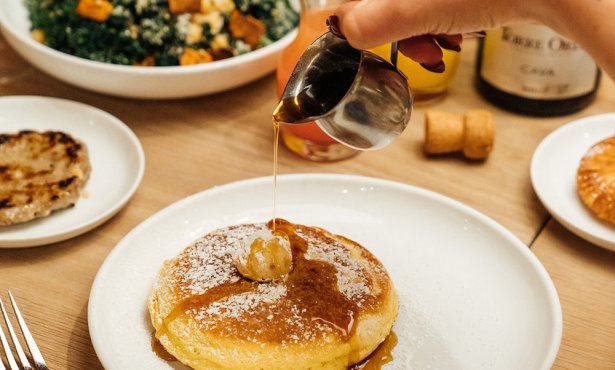Ferment Revolution
The 3rd Annual Santa Barbara Fermentation Festival

I’m tasting fermented raw coconut sap, and I like it. Co-organizers of the 3rd Annual Santa Barbara Fermentation Festival Katie Falbo, daughter, and Lynn Hartman, mom, are offering me a variety of foods that have been naturally “processed” by yeast or bacteria, the stars of their event. That ginger beer is refreshing and zippy; that sauerkraut is crunchy, salty, sour, and yummy; and as for that coconut sap — well, imagine the depth of soy sauce mixed with coconut milk, yet not as heavy as either, and there you go. Even better, it’s quite low on the glycemic index (not too many blood sugars), and it’s good for your microbiome — all the species that live inside you and help keep you a happy you. If it’s interesting enough for Michael Pollan to get excited, as he does in the fermentation section of his recent bestseller Cooked, we should all pay attention.
“Your gut is your second brain — if you don’t process things, if you don’t have those flora, you’re not going to be as healthy,” Falbo says. “Because we’ve lost this tradition [of fermented foods], our health is being sacrificed, but returning to those foods will help a large number of those issues.” The Fermentation Festival, held on August 24, is one way to return to those foods, found in almost every culture (no pun intended) from kimchi in Korea to vegemite in Australia to Worcestershire sauce in the U.K. There will be more than 35 vendors with info and demos (from locals like C’est Cheese to suppliers Mountain Feed and Farm Supply), four featured speakers, including Donna Gates, author of the groundbreaking The Body Ecology Diet, and events like hands-on sauerkraut and sourdough tables, plus a do-it-yourself pickle station. “People are so enthralled, so excited to have this information,” Falbo says. “It’s a day of empowerment — it’s about teaching people to do this at home.”
This is the third round for a festival that has grown by leaps and bounds each year. “Last year, we planned for 150 people, and we had 500,” Falbo says about the event held at Tom Shepherd’s Farm. “This year, we knew we needed a bigger venue, and Mark and Sharon [Tollefson] at Fairview Gardens were very interested in hosting us.” In fact, all proceeds for the event go to the completion of the new food stand at Fairview Gardens.
In addition to the education, there’ll be food — provided by SOL Food Kitchen and Nimita’s Indian Cuisine — and fun, from bands to chickens and goats for the kids to a cultured petting zoo, that will feature scobies (kombucha cultures), sourdough starters, and kefir grains that Falbo jokes “kind of look like boogers.”
“It’s not just, ‘Come to the festival if you have a lot of problems,’” Hartman begins, and her daughter finishes, “It’s another layer, a whole other element. Whether because of fascination or health reasons or a return to traditional foods, more and more people are interested in fermentation.”
Traditionally Fermented Sauerkraut
(recipe courtesy Katie Falbo)
makes 1 quart
1 large head of green cabbage
1 Tbsp. sea salt
1 Tbsp. caraway seeds, mustard seeds, and/or minced garlic (all optional)
Do not wash the cabbage. Peel off any outer leaves that look bruised or dirty. Cut the cabbage in half and trim out the core. Thinly slice the cabbage into ribbons and place in a bowl.
Add sea salt and any or all of the other ingredients listed above. If you want, you can just use sea salt.
Using your hands, massage the cabbage and added ingredients until the cabbage is wilted and has excreted much of its own juices — about 5-10 minutes.
A little at a time, pack the cabbage into a quart-sized Mason jar, and press down to make sure it is packed in as tightly as possible. The juice (or brine) should be above the cabbage once you have it all in the jar. If this is not the case, add a few tablespoons of water to the jar.
Place the lid on tightly and set in a warm place in your house, covered by a tea towel. Depending on the weather, your kraut may be ready in as few as 7 days or as many as 21 days. Taste it after one week. It is ready when you enjoy the taste. The longer it ferments, the more sour your kraut will taste. Once it is ready, transfer to the fridge, and enjoy within the year.
4•1•1
Discover a feast of bacteria and yeast at the 3rd Annual Santa Barbara Fermentation Festival, Saturday, August 24, 11 a.m.-5 p.m. at Fairview Gardens (598 North Fairview Ave., Goleta). Buy tickets in advance at santabarbarafermentationfestival.eventbrite.com using the promo code “CULTURED” to get a special discount rate: $12, adults and students; $25.50, family four-pack (two adults, two children).



